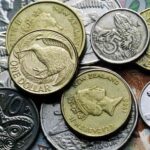Gold futures logged significant losses this week, as a heavier dollar and a lack of any economical headlines weighed on the precious metal as compared with interest baring assets, while traders also dismissed much of the risk over conflicts in Ukraine and the Middle East.
Gold futures for delivery in December dropped 0.61% on Friday, closing at $1 231.5 per troy ounce, ~2.8% down for the week. Weekly high and low were at, respectively, $1 272.6 on Monday and $1 228.1 per ounce on Friday, which was also a nine-month bottom. The contract dropped ~1.6% last week.
A significant number of positive economic figures boosted the US dollar to 15-month highs. The positive readings bump up speculation that the US Federal Reserve will be quicker to hike the central lending rate from its 0.25% level for the first time in six years, as the need for stimulus wanes.
The latest figures on retail sales confirmed an uptrend, logging 0.6% monthly growth, meeting expectations and recording the second-top monthly growth this year.
Investors now eye the meeting of the Federal Open Market Committee (FOMC), the Fed’s monetary policy body, next week, which is due to decide on the bank’s next steps on monetary policy and stimulus.
A seventh straight $10bn cut in monthly government assets purchases is highly probable, steering the quantitative easing (QE) program to a late-2015 close, with the Fed planning a rate hike after the QE program has concluded. Exactly when the hike would come is the question stirring markets, though, with the Fed expressing plans to probably raise borrowing costs a “significant time after QE has ended”. Analysts, however, project an earlier date, in light of recent upbeat economic data.
Meanwhile, the Eurozone and the euro, the dollar’s main competitor, are experiencing difficulties. A series of downbeat economic data and grounded consumer inflation prompted the European Central Bank to lower its lending rate to just 0.05%, the lowest ECB rate on record, in a bid to revive commercial lending, and to support exports, through a weaker euro.
The weaker euro supports exports from the Eurozone, though it also further strengthens the US dollar, pressuring gold and other dollar-denominated commodities.
Geopolitics
On the geopolitical scene, Ukraine was still kept on radar, as the EU introduced fresh sanctions, directly targeting Russian state-controlled oil companies. Moscow denounced the move and said it was ready to implement its own fresh counter-sanctions.
The market shrugged off the possibility of near-term negative global implications for crude supply, holding back the risk premium.
Meanwhile, the truce between Kiev and pro-Russian rebels was largely holding, though both sides seemed as distant from a peaceful resolution, with separatists calling for complete independence and Kiev even vowing to bring Crimea, the Black Sea peninsula annexed by Russia in March, back to Ukraine.
In the Middle East, the US had begun preparations for an international coalition against the Islamic State, after President Barack Obama had authorized air strikes on IS targets in Syria, signaling the US determination to “defeat” IS.
Next week
Next week has a lot in store in terms of economic data. On one side of the Atlantic, the Eurozone will post crucial CPI readings, as investors begin to gauge the effects of ECBs fresh dovish stance. Meanwhile, the US will report key PPI and CPI readings, in addition to housing data, industrial production and manufacturing gauges on New York and Philadelphia.





